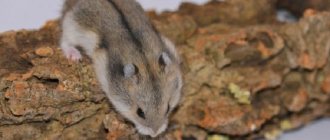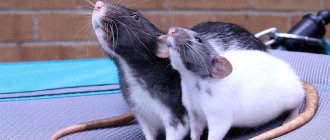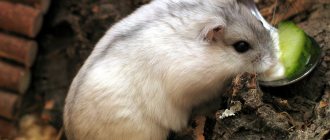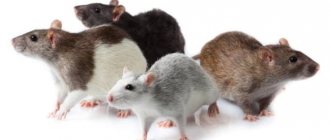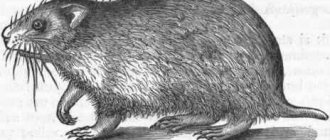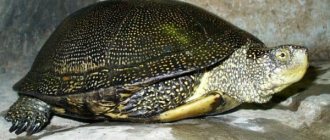Keeping Djungarian hamsters
Dzhungarik hamster photo
Hamsters, like babies, need thoughtful living conditions. Djungarians need special care, which is not difficult to provide. First, we determine the location for the cage. It should not stand on the floor or near an open window. A Djungarian hamster can get a serious cold.
By the way, a serious mistake is exposure to direct sunlight. The animal may overheat and die. But even if the cage is not in poor lighting, dampness is not conducive to normal life. Hamsters are nocturnal animals and too bright light during the day does not bring them pleasure. Since they are active at night, try not to place the cage in the bedroom.
Spreading
Djungarian hamsters have a fairly wide habitat. The species is found in natural conditions in southern Transbaikalia, Tuva, in the Aginskaya, Chuya and Minusinsk steppes, in Altai, and in the steppes of Western Siberia. In addition, representatives of the species are found in Northeast China and Mongolia.
Djungarians build their burrow houses in steppe or desert landscapes, much less often on the outskirts of the forest-steppe. These babies are not afraid of saline, sandy, gravelly soils. In Altai they are found at an altitude of up to 3 thousand meters above sea level.
Temperature for keeping hamsters
Ideally 17-20 °C. Air humidity 40 - 70 percent. High humidity negatively affects the heat exchange of living beings. Dry air is also dangerous - if the cage is located less than 2 meters from the battery. As a result, the animal may develop metabolic disorders.
A hygrometer will help keep the situation under control. Think about your pet in advance when ventilating the room so as not to leave him in a draft.
Before getting a hamster, you need to think about its needs in advance. The first thing you need to do is buy a suitable home for your future pet. Many people rely on the opinion of the seller at the pet store, but in vain. After all, the wrong choice not only threatens constant stress for the rodent, but can also lead to injury.
Health, disease and prevention
There are a fairly large number of diseases that can affect indoor hamsters. The most well-known include pathologies resulting from viruses, feed deficiency and parasite infestation. If the paralytic stage of rabies is extremely rare in domestic hamsters and ends in death, then there are a number of fairly common diseases, which are represented by:
- Aujeszky's viral disease, which quickly affects the central nervous system of a pet;
- Tizzer's disease, which causes fever, diarrhea, dehydration and apathy, ending in the death of the pet;
- infectious disease Bronchosepticosis, starting with serous-mucous discharge from the nose as a result of a cold;
- the disease Colibacillosis, manifested by decreased mobility, refusal to eat, as well as foul-smelling diarrhea and exhaustion;
- infectious lymphocytic choriomeningitis, dangerous to humans and cannot be cured;
- bacterial listerellosis, which is airborne and causes the death of the animal;
- viral encephalomyelitis.
Quite often occurring diseases also include damage to the domestic hamster by paratyphoid fever, or salmonellosis, as well as pasteurellosis, pneumonia and pseudotuberculosis. If there are errors in care, the pet may be affected by external or ectoparasites, represented by ticks, fleas and lice-eaters, to destroy which a 0.5% solution based on “Bromocyclene” or “Netritonate” is used.
Cage for dzhungarika. Basic principles
Think about the size of your home. According to research, the pallet must be at least 50x30 cm. This is the minimum living space, despite the fact that the area of the floors is not taken into account. A small pallet leads to stress, to obesity, it can gnaw on the cell, and therefore live less than expected.
The cage for the dwarf should be low (dunes for rodents are also sold). A small second floor is allowed, but the third floor is clearly superfluous. The hamster may fall and hurt itself. The second floor should not be made of twigs so that the furry's legs do not fall through, otherwise injury is possible. In nature, Djungarian hamsters have long passages in their burrows, so you can buy a cage with a closed labyrinth.
Example of a suitable cell
Some owners place rodents in spacious aquariums - such housing has disadvantages. The main disadvantage is the risk of injury. If there are children in the house, the glass aquarium may break. This will cause injury not only to the hamster, but also to the children. Aquariums are not well ventilated, which results in a bad smell if not cleaned every week.
If you buy a cage secondhand, it must be disinfected and thoroughly washed. The rods are metal (distance no more than 1 cm) and not rusty. Using these tips, you will be able to choose a decent home for your future family member. The next task is to acquire all the hamster's necessities.
External features
This is a very active animal with a beautiful fur coat, the maximum size of which does not exceed 10 cm, and its weight is 45 grams. Features of the Djungarian's appearance include a dark stripe on its back, which distinguishes it from most of its fellows.
The fur of this species of hamster is variegated with white patches. This helps the rodent in natural conditions to perfectly camouflage and hide from predators. The following colors are especially common among domestic Djungarian hamsters:
- mandarin;
- pearl;
- sapphire;
- standard.
In winter, the animal's coat sheds and becomes almost white. The inclusions become almost invisible, and the gray stripe on the back still stands out. It's funny that even at home, when animals do not lack food, they store food, collecting it behind their chubby cheeks.
How long do Djungarian hamsters live?
In the wild, the Djungarian hamster can live 12 months, but domesticated individuals live longer. Of course, everything is individual, but there are approximate figures. If you comply with the requirements for the care and maintenance of a hamster, and protect it from stress (for example, forced communication with cats), then it will live on average 3 years. There have been cases when hamsters lived up to 4 years.
Breeds
Dwarf hamsters come in several breeds, differing primarily in coat color, and are connected by excessive activity.
Dzungarian
The Djungarian hamster is one of the most famous pets of small breeds. The rodent also lives in the wild: on Asian steppe plains and deserts. Representatives of this species are very sociable and partial to attention. Dzhungarik, as he is also called, has thick gray fur with a dark stripe along the entire length of the back, and a white belly. Hamsters weigh only 35–60 grams and measure 5–10 cm.
The animals' low legs are covered with short light hairs, and they also have a tiny tail. The muzzle is slightly elongated, with dark beady eyes. According to color, they are divided into standard (gray-brown with a white belly), sapphire (gray fur with a bluish tint and a white belly), pearl (milky color with streaks of gray tone), tangerine (light brown fur shimmers with a light orange tint).
The lifespan of Djungarian hamsters is from 2 to 4 years, with appropriate care. Representatives of this breed can change color; by winter, their coat becomes lighter. The animals are capable of mating at 4–6 weeks.
In the natural environment, they have offspring from spring to autumn; in a cage they can reproduce all year round. Up to 11 babies appear at a time, pregnancy lasts 21–26 days.
Taylor's Hamster
Taylor's hamster measures no more than 6 cm, although it looks quite plump. The fur is thick, with uneven color: the chest and belly are white, and the head and back are brownish. Tiny ears, also overgrown with fur, are almost invisible, as is the miniature tail. The eyes are black with white eyebrows and spots, the nose is pink. Taylor's hamsters breed all year round.
The duration of the gestation period is about 20–30 days, the offspring ranges from one to five crumbs, weighing only one gram. On the twentieth day, the cubs can live separately. The animals become sexually mature at 10–12 weeks. The life cycle lasts 1.5-3 years.
Campbell's hamster
Campbell's hamster is just one representative of small hamsters, which has different colors: white, black, light brown. The animal's body is round, can reach up to 10 cm in length, weighs approximately 25 g. The tail is very short, the ears are pointed, and the base of the paws is covered with hair. The front legs have 4 toes, and the hind legs have 5. During one pregnancy, at 18–22 days, 4–9 babies appear. A Campbell's hamster lives for 1–2 years.
Roborovsky's hamster
The smallest breed in the world, its representatives measure 4.5-5 cm and weigh 20-25 grams. The fur is fluffy, the tiny tail is completely lost in it. Slightly rounded ears are located on the top of the head, the eyes look like black beads. A special feature of this breed is the presence of white eyebrows. The animals are very jumping, this ability has developed due to the fact that the hind legs are longer than those in front.
Roborovsky's hamsters are classified as hairy-legged, their legs are covered with short hairs. The fur coat is a delicate golden sand color. Varieties with different coat colors have been bred, but you should know that such babies have poor health. One litter can have 3–6 babies. Representatives of this breed live up to 4 years.
Conditions for keeping a hamster
Firstly, a drinking bowl, a feeding trough and a bathing basin . The drinking bowl must be special - with a metal ball. This is the most correct drinking bowl option. Change the water in the drinking bowl daily. The feeder can be made of different materials, but it is better to choose metal or ceramics. The plastic bowl is easy to turn over. You can make a bathing suit yourself using a bowl, the main thing is that it is comfortable to climb into, and that as little sand .
Secondly, you need to buy a house in which he will sleep and spend most of the day. It is important to know that Khomas like to stock up on large amounts of food in their huts, so buy a larger version. Pay attention to the window - it should be large or absent altogether, so that the fluffy does not get stuck in it when it grows up.
Hamster wheel. Is it necessary?
A hamster can run up to 9 kilometers in one night.
Don't forget about the wheel or running disc. This is a kind of cardio exercise machine for hamsters. In pet stores you can find small wheels consisting of rods, the distance between which is 5 mm. You should not buy such a wheel - a dzhungarik hamster can seriously damage its paw while running. The diameter of the wheel should be from 14 centimeters. You can buy a plastic or wooden wheel, but a metal one begins to creak over time.
A walking ball and a Djungarian hamster in it. Good or evil?
If you are concerned about the animals, then do not buy a hamster ball. In the cartoon "Volt" the hamster Rino was in a ball, but do not forget that this is a cartoon. A real animal will not like such a walk, because in a ball the hamster sees objects much worse due to the dull plastic. Poor visibility means it can crash into walls and other objects - no fun.
There is practically no ventilation in the ball, and there is a risk of overheating of the body. Such walks cause considerable stress to the animal, because the hamster actively just wants to get out of the confined space. There are countries planning to ban hamster balls. In Germany, balls are included in the list of animal products with a high risk of injury. So play it safe and keep your furry one in sight while you play.
Litter for rodents
An important point to consider is the filler. Corn filler is better suited, but it is not sold everywhere and is not cheap. As an alternative, use white napkins without dyes or fragrances. Wipes absorb moisture and odors less well, so they require replacement more often. But the hamster will like them, and he will be able to use them to insulate the house.
Corn filler
Is it possible for a dzhungarika to lay newspaper or sawdust as bedding? Newspaper should not be used - printing ink contains lead. Pine or cedar granules, pine sawdust carry a strong allergen for rodents, causing sneezing, rashes and even premature death.
Granular litter for cat litter is also not suitable, even non-coniferous ones. The hamster will simply rub his paws on these huge cobblestones. If you don’t want to spend money, you can wet the napkins (white), squeeze them with your hand into small granules and let them dry completely. Get a kind of analogue of corn filler with your own hands.
Hamster toilet
By nature, hamsters are clean animals: they take care of their fur and “wash themselves” when they wake up, so it’s not difficult to teach a hamster to go to a special toilet.
This hamster skill will allow you to clean the cage not every day, save time and reduce the unpleasant odor. And the Djungarian hamster will walk on dry bedding - which will protect it from colds.
Care
Frequent illnesses
The most common problem with Djungarian hamsters is injuries that the animal can receive when falling. When injured, you may notice that the hamster's paw is twisted or turned at an unnatural angle. From pain, the animal can fall into a state of shock: it is motionless and does not react to what is happening. An injury is a reason to take your hamster to the vet as soon as possible. Treatment depends on the condition of the animal and the severity of the injury.
Susceptible to respiratory viral infections. Infection is indicated by:
- decreased activity;
- sneeze;
- loss of appetite.
There is no special treatment for viral diseases in Djungarian hamsters. It is recommended to provide your pet with vitamin supplements and high-quality food to strengthen his body’s immune defense and speed up recovery.
Conjunctivitis
If your hamster cannot open his eyes and there is a small amount of pus on his eyelids, he may have developed conjunctivitis. It is recommended to treat conjunctivitis by washing the animal’s eyes with a weak saline solution. In order not to make a mistake in the concentration, you can buy saline solution with a sodium chloride concentration of 0.9% at the pharmacy.
Cataract
Cloudiness of the pupil indicates cataracts. This disease usually develops in older individuals. It is impossible to cure cataracts.
Long teeth
Refusal to eat may indicate a dental injury or that too long teeth are preventing you from eating. In such cases, the teeth should be straightened by contacting a veterinarian. To prevent excessive growth of incisors, you should constantly keep a chalk stone in the cage.
Dermatophytosis
Peeling skin and hair loss are a sign of eczema or dermatophytosis. Problems with the skin indicate either stress or the presence of an allergen in the cell. Treatment of eczema and dermatophytosis is carried out by a veterinarian.
Parasites
If your hamster is constantly itching, restless, and has red dots visible on its skin, it most likely has parasites (lice or fleas). On sale you can find many products designed to combat skin parasites in rodents. A veterinarian will help you choose the safest one for your animal.
Refusal to eat, diarrhea, and loud bowel movements are symptoms of an intestinal infection. They can be cured with antibiotics.
How to properly care?
It is enough to provide him with everything he needs (a spacious cage, food, a drinking bowl with fresh water). There are some subtleties that will allow you to create optimal conditions for the animal. In order for the pet to quickly get used to the owner, it is recommended:
- talk to the animal in a quiet, calm voice;
- pick up the hamster delicately and gently, supporting it under the front paws;
- before touching the animal, give it the opportunity to sniff your hand: this way the animal will quickly get used to the owner’s smell.
It is important to clean the cage regularly. This should be done once every 7-10 days
The hamster is placed in a small carrier cage or cardboard box with holes for ventilation. The old filler is removed and replaced with a new one, leaving a small amount (to make the animal feel more comfortable). Once every 4 weeks it is necessary to wash the cage or aquarium with warm water and laundry soap.
How not to care
To avoid harming your hamster, you should:
- bathe your pet in soap and water. The hamster can handle cleaning its fur on its own. You can buy special sand for him for bathing guinea pigs. Sand is poured into the bathing suit and placed in the cage. After some time, the hamster begins to wallow in the sand and clean its skin;
- buy a “comrade”. Hamsters do not tolerate rivals and defend their territory. They only need a partner for reproduction; the rest of the time, dzhungarikas feel great alone. If the need to house two hamsters in one cage is great, you must first divide the cage into two halves using a partition. The partition can be removed only when the animals get used to each other and do not show signs of aggression;
- leave the hamster on a high surface. Rodents are lowland animals and do not understand what height is and its dangers. Dzungarik may fall and be seriously injured and even die.
In order for your hamster to quickly get used to it and trust its owners, you should not:
- make sudden movements near the animal;
- scream near the cage, play loud music;
- pick up a sleeping or recently awakened animal. This can frighten the hamster so much that it bites the owner, which is quite painful;
- roughly take an animal by the withers to lift it.
How to toilet train a hamster
Buy a toilet with small sides at a pet store. Animals often choose the corner of the cage, so it is better to choose a corner toilet. The filler may come included; if not, choose the one you bought for regular bedding.
Keep the toilet away from the feeder. Djungarik will not walk into it right next to food.
Do not install a hamster litter box immediately after your hamster arrives. It's better to watch the animal for the first week or two. He can choose a convenient place on his own.
Hamsters go to the toilet in the corner, which is why corner toilets are popular
If your Djungarian hamster is sleeping or stocking up in the toilet, think about the reason for this behavior. Maybe he’s just not satisfied with an ordinary house. Perhaps it is too cramped or difficult to get to (if it is on the second floor, for example).
Do not demand instant submission from the fluffy and do not punish. You may need two toilets, because the hamster sometimes chooses two corners, everything is individual here. It may take several days for him to get used to the new object.
Diseases: prevention and treatment
Funny rodents can get sick too. Risk factors most often include both direct violations of housing conditions and stress caused by frequent cage movements, disruption of the daily routine, or the appearance of a competitor.
Prevention means:
- proper and regular nutrition;
- timely cleaning;
- regular replacement of litter;
- creating all conditions for activity.
Diarrhea is also often annoying. Diarrhea is dealt with by light fasting or switching to lighter foods. If it does not stop for 2-3 days, then you need the help of a veterinarian.
Suppuration of the eyes is easily recognized by swollen eyelids, the appearance of pustules, while they become moist and sticky. This means that the infection has already been introduced. The owner's actions in such cases:
- the animal is isolated;
- the cell is thoroughly cleaned and disinfected;
- eyes are injected with “Albucid” (four times a day, 1-2 drops);
- complete transition to grain feed with small additions of chicken.
Djungarians have one not very pleasant feature - a predisposition to diabetes. It is very easy to notice the symptoms: thirst appears, appetite increases due to weight loss, and the smell of urine becomes distinct and pungent.
Such manifestations are a signal to visit the veterinarian; you won’t be able to cope on your own (the maximum is to do a test for diabetes; preparations are sold in pharmacies). Moreover, similar symptoms are observed in kidney diseases.
Important! Be sure to put several smooth branches of fruit trees in the cage; the animal will sharpen its teeth on them. Otherwise, they will grow and it is possible that over time they will pierce the lip or cheek.
vitamin deficiencyBites. Fractures are more dangerous - an active pet has fragile bones and ligaments that are impossible to fix
Therefore, the cage for the nimble Djungarian hamster becomes empty during rehabilitation - the wheel and all other entertainment are removed. 10-14 days provide complete rest, provide calcium-rich food
Fractures are more dangerous - an active pet has fragile bones and ligaments that are impossible to fix. Therefore, the cage for the nimble Djungarian hamster becomes empty during rehabilitation - the wheel and all other entertainment are removed. 10-14 days provide complete rest and provide calcium-rich food.
Feeding of jungarians
Often, breeders choose ready-made mixtures in pet stores. A base of seeds and grains. The following grains are welcome: oats, wheat, barley, rye.
Nuts (except pine nuts and almonds) and seeds can be given rarely , as they contain a large amount of fat, and these little fluffies are prone to obesity.
Don't forget to give your hamster protein food. Insects are high in protein, so give your pet a treat a week. Crickets can be purchased at almost every pet store. From time to time, instead of insects, give a piece of egg white or a little yogurt (without dyes or flavorings).
Pumpkin, broccoli, cauliflower, zucchini, eggplant, cucumbers, bell peppers, bananas (rarely), wheat sprouts (oats, millet), green peas, parsley, dill, lettuce are suitable as delicacies .
Diseases
Alas, representatives of the Dzungarian breed sometimes get sick. At birth, many hamsters suffer from oxygen deprivation, so you need to know how to care for newborn babies. Injuries (fractures, dislocations, bruises, etc.) also occur, usually when the animal falls from a great height.
What else do you need to know about hamster diseases, what are they?
- Diabetes. Djungarians suffer from malnutrition more often than other breeds. To prevent illness, you need to carefully consider your pet's diet.
- Colds. They occur if the fluffy dog is not dried well after bathing or left in a draft. Wet litter can also cause a cold. Djungarians also suffer from viral infections and can pick them up from their owner. To prevent diseases, take care to strengthen your pet’s immunity: give him fresh parsley leaves, lettuce, unsweetened apples, and vegetables.
- Eye diseases. Typically, cataracts in rodents appear closer to old age, but even a baby can get conjunctivitis. The phenomenon is typical for furry cats whose owners rarely tidy their cages.
- Skin diseases. If the animal's fur begins to fall out or dandruff appears, this is an alarm bell. Skin ailments can be caused by frequent stressful situations or individual intolerance to a substance.
- Tumors. They have an acquired or congenital nature. The mechanism and causes of tumor formation in rodents are not fully understood, so no animal is immune. It is only known that an abundance of fatty foods increases the risk of getting sick.
- Parasitic diseases. Caused by rat fleas and ticks.
As you can see, many diseases of Djungarian hamsters can be avoided by following the principles of proper nutrition and taking care of cleanliness in the home. But if your furry miracle does catch some kind of infection, you should immediately consult a veterinarian.
Djungarian hamsters are cute creatures with an unpredictable character. In order for the animal to be healthy, you need to take good care of it. Particular attention should be paid to the nutrition and sanitary condition of his home. If you take proper care of your pet, it will rarely get sick and will be happy to come into your arms!
Pet breeding
During the year, this animal can reproduce 3-4 times. Each litter contains 4-9 children. They are born blind and bald, but within a week they are overgrown with fur. When they reach the age of one month, they need to be resettled. At this time, they gradually begin to be perceived by the mother as competitors. The female can become pregnant already in the fourth month of life.
The pregnancy of the dzhungarika lasts 19-21 days. Moreover, within a day after giving birth, the female is able to become pregnant again.
It is important not to disturb her in the last days of pregnancy and children under one week of age. You will leave your smell, and this will make your pet very panicky. If one day he smells someone else's scent on his offspring, he may simply kill his children. To prevent this from happening, limit contact as much as possible during pregnancy.
Rodent character
Djungarian hamsters are militant introverts. They are sensitive to the protection of personal space. These cute rodents fiercely fight the enemy if he encroaches on their territory. They use teeth and claws, causing terrible wounds. Male Djungarians warn their relatives about the invasion of aliens with sharp sounds, standing on their hind legs.
Domesticated animals also like to live alone. Hamsters quickly get used to people, they willingly allow themselves to be picked up, they like gentle stroking and calm speech. They are inquisitive and nimble. If you make sudden movements and make frightening sounds, the hamster may scratch and bite.

